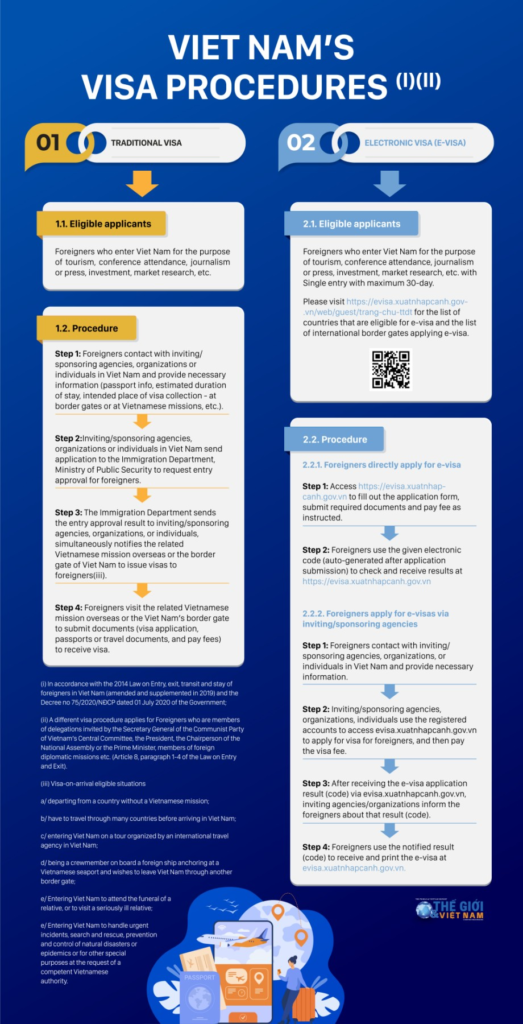Now that Asia is back on the post-pandemic travel map, there’s plenty of demand for travel to Vietnam. This is one of the most up-and-coming destinations to visit in Asia. Like many countries, Vietnam has an e-visa process. And like many countries, the e-visa process is not easy to navigate.
The first challenge is finding the correct place to apply. Here’s an example: would you think, based on the name, that this is an official Government of Vietnam site? Well, it’s not. This is instead a private company that will fill out the official form for you and charge you an extra fee, should you be unfortunate enough to click on this:

There are a lot of these companies, and they play SEO games, buy ads, etc. all trying to displace the official site at the top of search engines. This can be expensive! The official site charges only $25 for a 30 day single-entry visa, or $50 for a 90 day multiple entry visa. Other sites can charge double this amount (or more).
The next problem is actually getting the site to load. Connectivity between US Internet providers and the Vietnamese government isn’t very good. I ultimately had to use a VPN (connecting through a Southeast Asia gateway) to get the site to properly load. If you get stuck with the site half loaded, try a VPN and this might help you work around the problem.

The application form itself is relatively straightforward, although there are some unusual questions such as your religion. I found Vietnam’s system to be much less fussy with photo requirements than the Uzbekistan and India e-visa pages (which both have complex photo rules, and perform image analysis to make sure you have met them). I used a scan of a passport photo, and a scan of the information page of my passport. Both were accepted by the site without issues.

A screen will pop up with a registration code. You should get an e-mail message with this information as well, but if you don’t receive it for some reason, you’ll need the registration code to look up and print your visa once it’s issued. But first, you have to pay.
The Vietnamese government uses a payment portal operated by Vietcombank to process your credit card. All of this is relatively straightforward; you agree to the terms and conditions, pick the card type, enter the usual card details to make an online purchase, and send through the purchase. However, to your bank, you’re making an online purchase in Vietnam and they might freak out over this. I anticipated this, and used my trusty HSBC Premier MasterCard (which usually works fine with any sketchy thing I want to do), but this time, it didn’t work. The payment failed and I got sent back to the Vietnamese government Web site.
No problem, there was a “retry” link, which led me to a page to look up my visa application. Good thing I took a screen shot of that earlier. After entering my visa application number, birth date, and email address, I was taken back to my application form. No problem, I just clicked through again, and was taken to the following page:

This took me back to my visa application. I clicked through to submit it again, agreed to all of the terms and conditions again, and got through to the payment page. Except:

Yep, that’s right – if your bank doesn’t immediately let through a sketchy looking online purchase from Vietnam without trying to trigger Verified By Visa, MasterCard SecureCode, etc., you have to fill out a whole new visa application again from scratch.
I went ahead and did this, and used an Amex for my second attempt (Amex is usually my second most reliable way to make a sketchy looking purchase go through). This went through, somehow:

It’s not the amount it was supposed to be, and “New Merchant” wins the award for the shadiest looking online purchase I have ever made, but my visa application shows up in the processing queue now.
The stated timeline for processing Vietnam e-visa applications is “3 working days.” Keep in mind that this doesn’t include weekends or Vietnamese holidays. Accordingly, it’s best not to leave this until the last minute if you plan to visit.
You can also apply for a traditional passport sticker visa through a Vietnamese consulate or embassy. However, this appears to be discouraged given the complicated and time consuming process involved:

Hopefully this is helpful if you choose to visit Vietnam. I hope that in the future, the Vietnamese government will invest in faster Internet connectivity for its Web site, and that Vietcombank will improve its procedures in handling payments. It’s really not unreasonable to allow trying a different payment method if the first one doesn’t go through.
